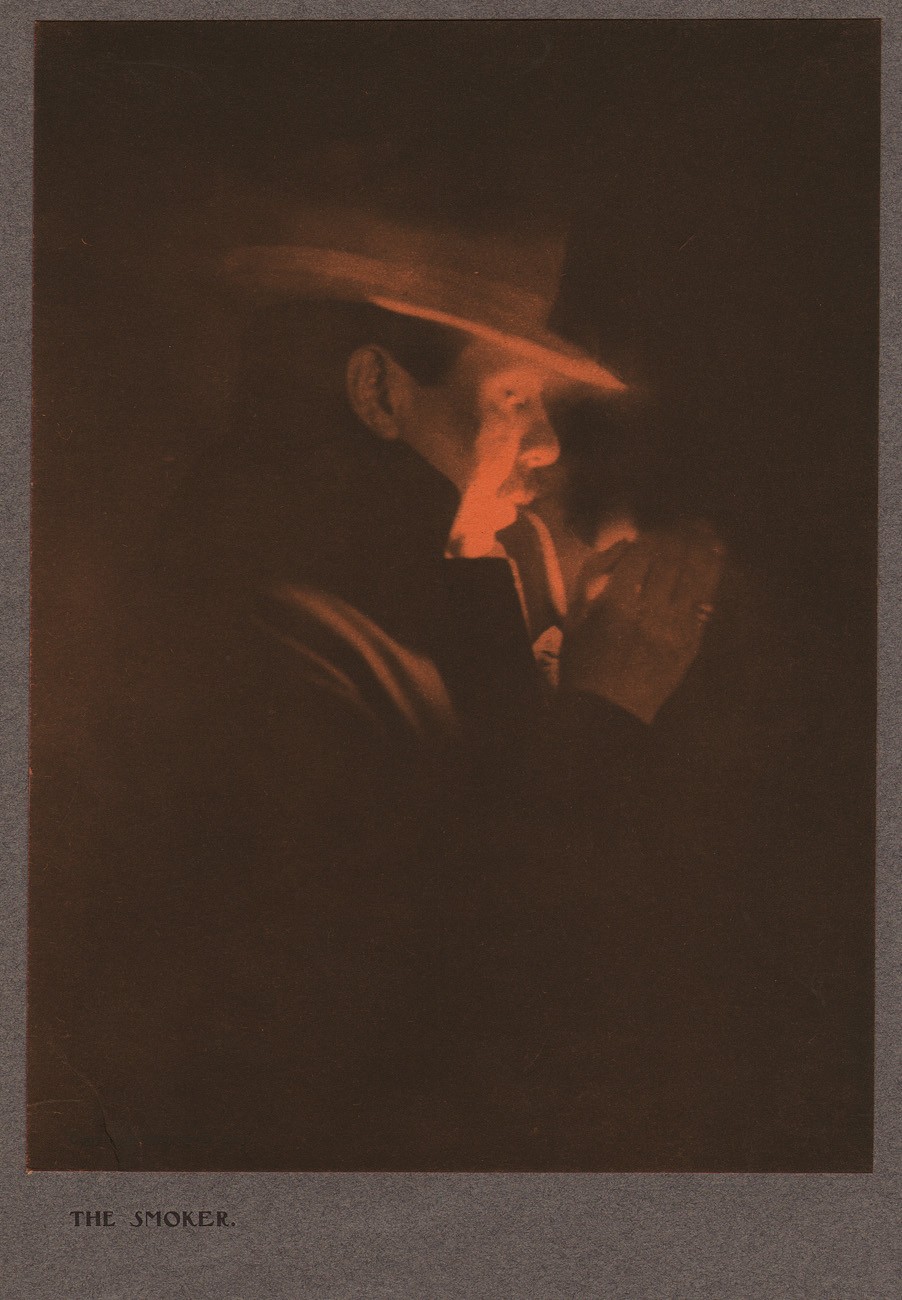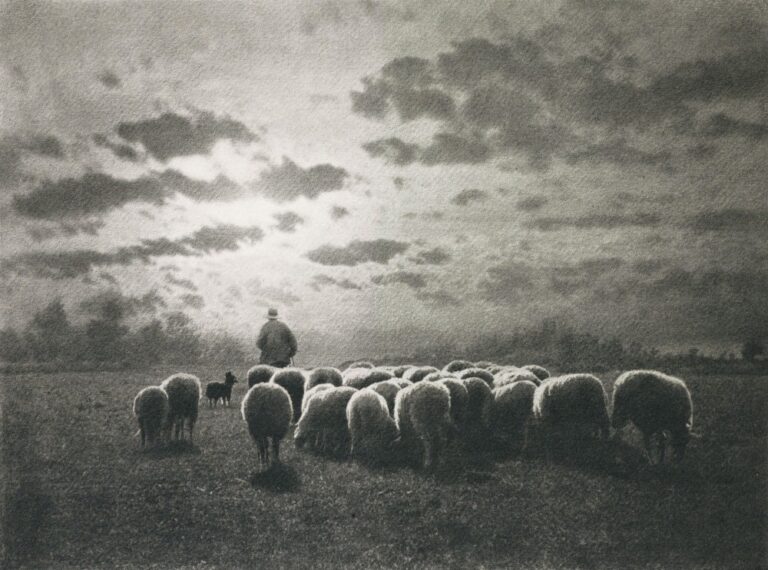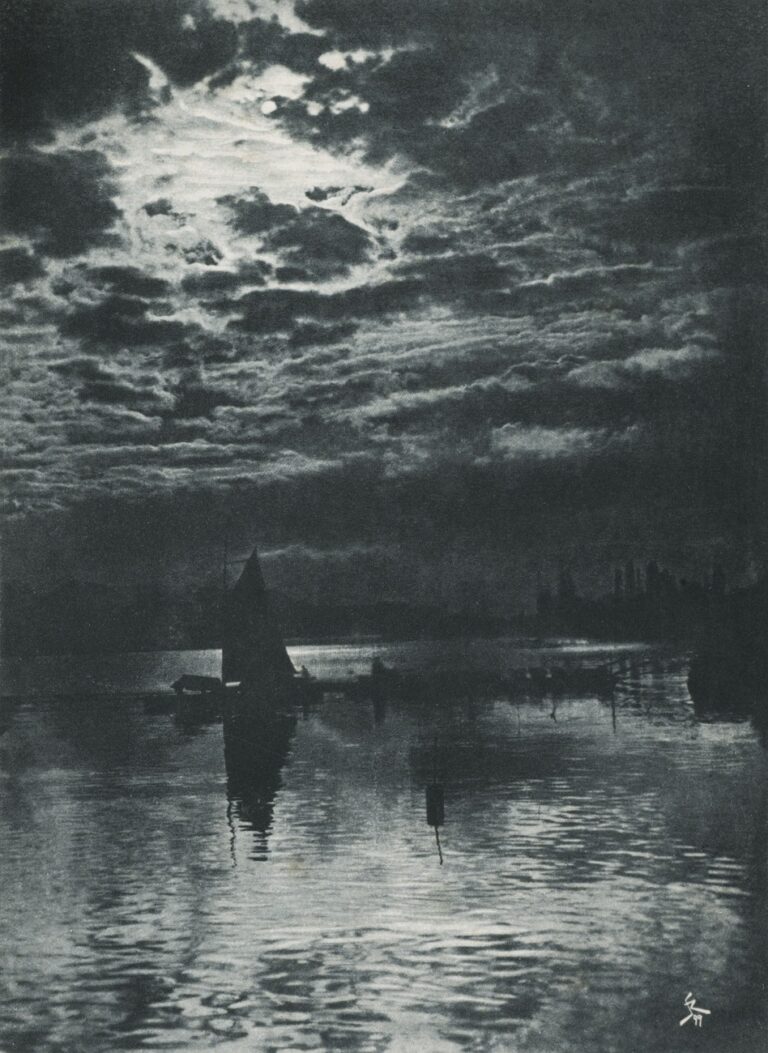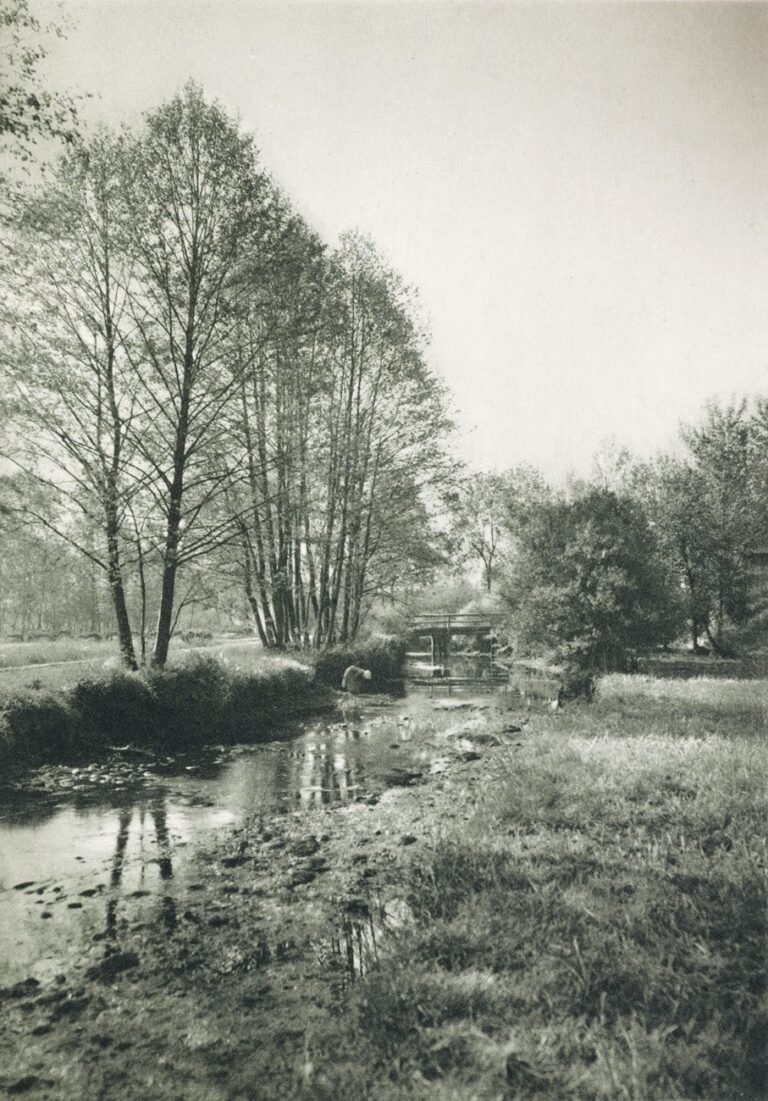
The Smoker
This portrait of a man lighting his pipe was taken using artificial light. It is a photogravure printed on orange/red paper corner-glued to a gray art-paper support.
Daniel Francis Gay exhibited in the Philadelphia Photographic Salon in 1898 & 1899. In 1898 his address is listed as 340 Main St. in Worcester. A 1912 article in Worcester Magazine states he was a long-time member of the Worcester Board of Trade.
According to an article in the September, 1892 issue of the American Amateur Photographer, Gay was a member of the Worcester (MA) Camera Club.
Proficient in portraiture by so-called Flash-light, or artificial method of illuminating a subject, he wrote an article on this quite dangerous method presented as an excerpt in the June issue of the Photo-Era re-published in the July, 1900 issue of the Photographic Times:
Portraiture by Flash light, by Daniel F. Gay.
The secret is to hang in front of the flash two thicknesses of cheese-cloth about three feet square. The flash illuminates this, and the cloth then becomes the source of light for the sitter. This is equivalent to a window three feet square, and destroys the sharp shadows given by an unprotected flash. If the light is close to the subject-four or five feet—it gives round lighting. as shown by the baby’s head. This picture and the other two are shown merely as results which have been secured with this method by one unskilled in portraiture. and in no sense are they to be taken as the final limit of possible results.
Any form of flash-lamp may be used which does not “spit” so badly as to set fire to the cheese-cloth. It should be entirely under control as to the moment of flash. so that a fleeting expression may be caught. With the Ætna flash lamp the powder is put in the pan, and a plunger bearing a flame is driven into it by pressure on a bulb. The plunger has a tuft of asbestos, which is to be wet with alcohol and lighted. In use the alcohol consumes too rapidly, and it is better to remove the asbestos and substitute on the end of the plunger a short piece of “punk,” (some relic of Fourth of July.) This glow is not sufficient to ignite the powder. so it is necessary to lay in the powder a bit of soluble gun-cotton, which is very inflammable. With this combination one can wait five minutes, or even longer, for the pose or expression, and be sure the powder will ignite the instant the bulb is pressed.
For proper use the lamp must be on some sort of stand which can be raised or lowered and moved about the room. It is very necessary to have a shield to prevent the flash shining directly into the lens. The compound used must be a quick explosive: for, if it burns slowly. the subject will wink or flinch. The aluminum flash powders burn quickly, and leave less smoke than the magnesium powders.
The amount of light may be controlled by using more or less powder, and the necessary quantity can be determined only by each for himself, varying with the tone of the room, lens opening, and distance of the camera as well as the distance of the lamp from the subject. The lens must be used wide open, and if no larger than f/16 it will be difficult to secure good work even with a large amount of powder. (1.)
The Smoker: printed on left recto corner of print: Copyright 1900 by D. Gay
on mount below print: The Smoker.
1. excerpt: The Photographic Times: New York: July, 1900: pp. 324-25



